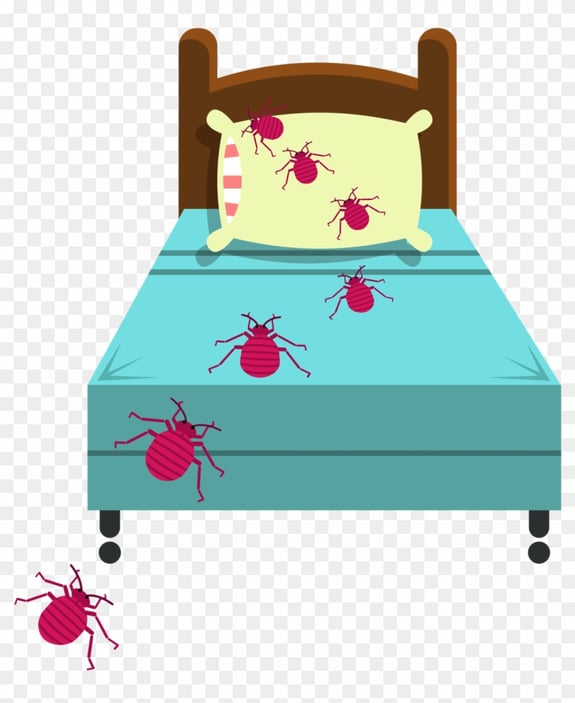What immediately comes to mind when someone says “Bedbug Infestation?" After the first shiver down your spine from just the words, your next thought is probably “What am I going to do now?”
Bedbugs are a worldwide problem, causing property loss, expense, and inconvenience. Most people don’t even realize they have brought bedbugs into their home until the infestation is already extreme and possibly spread to other units. Bedbugs are small, flat, parasitic insects that feed solely on the blood of people and animals while they sleep. Bedbugs are reddish-brown in color, wingless, range from 1mm to 7mm, and can live several months without a blood meal. They hide during the day in places such as seams of mattresses, box springs, bed frames, headboards, dresser tables, inside cracks or crevices, behind wallpaper, or any other clutter or objects around a bed. They have been shown to be able to travel over 100 feet in a night but tend to live within 8 feet of where people sleep, beds, recliners, sofas, etc.
Associations are strongly encouraged to take the following preventative steps:
- Provide training for staff to identify bedbugs, and to perform ongoing prevention actions as outlined in the Integrated Pest Management plan developed by HUD. When a community is at high risk for bedbugs (for example, if the community has experienced prior infestations), periodic building inspections are recommended.
- Actively engage residents in efforts to prevent bedbugs. Education and involvement of tenants is a critical component of IPM for bedbugs. Bedbugs may often go undetected and unreported and, because they are active at night, tenants may not be aware of their presence. The association may wish to hold workshops for residents to learn to identify bedbugs, to create unfriendly environments for pests, and to report suspicions of bedbugs as soon as possible.
- Provide orientation for new residents and staff, and post signs and handouts regarding bedbug prevention.
For more details on Integrated Pest Management, see the online guide at http://www.stoppests.org.
